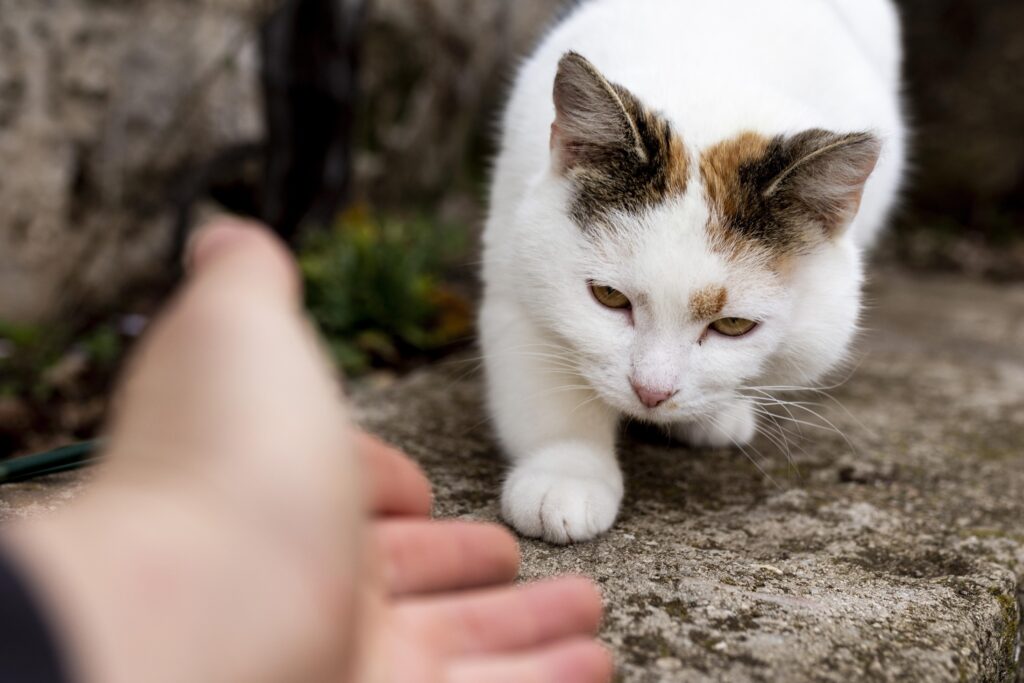Our pets are more than just companions; they’re family members. Just as we prepare for unexpected emergencies with human first aid kits, having a first aid kit specifically for your pet is also important to guarantee their safety and health.
Being prepared can make all the difference, whether it’s a minor cut, an allergic reaction, or a more serious injury.
In this blog, we’ll guide you through the essential items every pet first aid kit should include. From basic supplies to specialized tools, you’ll find everything you need to protect your pet in any situation. Let’s get started!

Why Every Pet Owner Needs a First Aid Kit
Accidents can happen anytime, even to our pets. Sometimes they can hurt themselves while playing, nibble on something harmful, or have an unexpected illness. In these cases, having a first aid kit ready can be a lifesaver.
As pet owners, we want to do everything we can to keep our pets safe and healthy. A first aid kit gives you the tools to handle minor injuries and emergencies until you can get professional help. It’s not just about cuts- your kit could help you manage things like allergic reactions, overheating, or even removing something stuck in their paw.
Being prepared doesn’t just help your pet; it also gives you peace of mind. In a stressful situation, knowing you have the right supplies on hand can calm you and also help your pet.
Essential Items for a Pet First Aid Kit
As we mentioned above, having a pet first aid kit is a must-have for every pet owner. Whether your pet gets a small cut during a walk or needs immediate care before heading to the vet, having the right supplies on hand can make all the difference. Below, we’ll break down the essential items into categories to help you build a kit.
1. Wound Care Supplies
When your pet gets a scrape, cut, or other minor injury, having wound care supplies is important. These supplies help you clean, protect, and treat injuries to prevent infections and speed up healing. Here are some essentials every pet owner should include in their kit:
A. Non-Adhesive Dressings
Non-adhesive dressings are designed to cover wounds without sticking to your pet’s fur or skin, making them easier and less painful to remove. They create a protective barrier over the injury, which keeps dirt and bacteria out while letting the wound breathe and heal properly.
B. Gauze Pads and Rolls
Gauze pads are great for cleaning or covering wounds, and gauze rolls can be used to secure dressings or wrap around larger areas. They’re soft, flexible, and easy to use, making them perfect for various injuries. It is good to have different sizes on hand to handle small scrapes or larger cuts.
C. Antiseptic Wipes or Solutions
Antiseptic wipes or solutions are essential for cleaning wounds and reducing the risk of infection. They help kill bacteria and remove debris from the injured area. Be sure to choose pet-safe options, because some human antiseptics can be too harsh for animals. Saline solutions are also great for flushing out wounds gently.
2. Medications
Having the right medications in your pet’s first aid kit can help manage common health issues like allergic reactions or skin irritations until you can talk to a vet. These medications are safe for temporary use when used correctly and can make your pet more comfortable in emergencies. Always check with your vet for proper dosing and any specific recommendations for your pet’s breed, size, or health condition. Here are two key medications to include:
A. Antihistamines for Allergic Reactions
Antihistamines, like diphenhydramine (Benadryl), can help ease mild allergic reactions caused by insect bites, stings, or environmental allergens. They reduce swelling, itching, and discomfort. Make sure to confirm the correct dosage with your vet, because it can differ depending on your pet’s size and weight.
B. Hydrocortisone Spray for Skin Irritations
Hydrocortisone spray is a gentle, pet-safe solution for soothing itchy, irritated, or inflamed skin. It’s helpful for managing hot spots, minor rashes, or bug bites. This spray provides quick relief and prevents your pet from scratching or licking the affected area, which can make the irritation worse.
3. Tools
Some tools are important for addressing various pet emergencies, from checking their temperature to safely removing ticks or splinters. These tools can help you assess your pet’s condition and give them immediate care. Let’s dive into these essential tools in more detail:
A. Digital Thermometer
Just like we use thermometers to check our body temperature, pets need them too. A digital thermometer is used to check your pet’s body temperature if they’re showing signs of illness. Pets have a higher normal body temperature than humans, so it’s important to use a thermometer designed for pets. Always take their temperature rectally for the most accurate reading, and clean the thermometer thoroughly after each use.
B. Tweezers for Tick and Splinter Removal
Tweezers are a simple but important tool for removing ticks, splinters, or other foreign objects from your pet’s skin. Choose tweezers with a fine tip for precision and safety, because this minimizes the risk of hurting your pet or leaving parts of a tick behind. Tick removal tools are also a great addition to your kit.
4. Miscellaneous
Miscellaneous items in a pet first aid kit are probably not the first things you think of, but they can be lifesavers in unexpected situations. These extra supplies help you stay organized, clean, and prepared to act quickly when your pet needs help. They’re practical additions that complement your other first-aid essentials, so let’s learn more about them:
A. Disposable Gloves
Disposable gloves are crucial for maintaining hygiene when handling wounds, cleaning up messes, or applying medication. They protect both you and your pet by reducing the risk of infection and cross-contamination.
B. Emergency Contact Numbers for Your Veterinarian and Local Animal Hospitals
Having a list of emergency contact numbers is very important during a crisis. Include your vet’s phone number, the nearest animal hospital, and a 24/7 pet poison control hotline. Keeping these numbers in your kit saves precious time when you need professional help.
Conclusion
A good pet first aid kit is a must-have for every pet owner. It helps you take care of your pet in case of accidents or emergencies, giving you the right tools to keep them safe and comfortable until you can get professional help. From cleaning wounds to treating allergies, and having the right tools, each item in the kit is there to help you handle different situations.
Emergencies can happen when you least expect it and having these supplies on hand shows that you’re prepared to give your pet the best care when they need it most.
If you’re looking for more information on handling specific emergencies, check out our guide How to Remove Ticks From Dogs which offers helpful advice for keeping your dog safe from these common pests.



